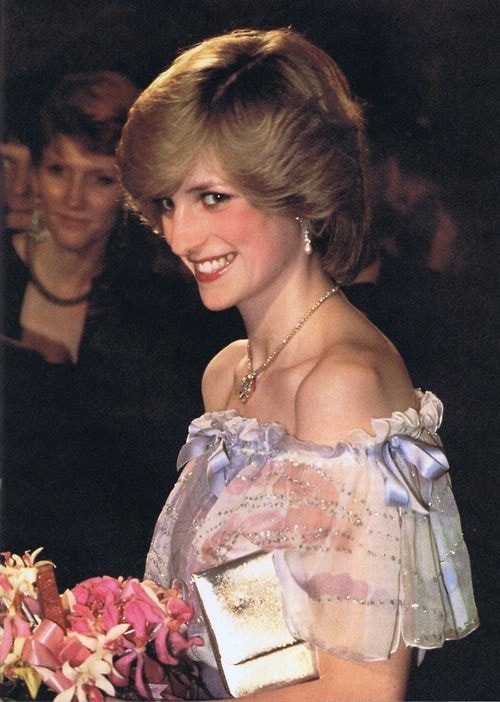Throughout her decades in the public eye, Princess Diana cemented herself time and time again as the foremost fashion icon of her time, not only for her regal glamour but equally for her off-duty and post-royal approach to dressing, looks which went on to shape a generation’s wardrobe.
Finding her style in the public eye, the late royal’s fashion phases were well documented. When first commencing royal life, a newly-engaged Lady Diana Spencer adopted the same “Sloane Ranger” aesthetic as her peers, a preppy look typical of upper-class English girls. As she married and bumpily adjusted to royal life she promptly become “Shy Di”, not only named for her timid head tilt and bashful smirks but for overly saccharine looks that often consisted of ‘pie-crust’ blouses, ruffles aplenty, and her gravitation towards pastels and floral prints.
But soon, her aesthetic developed a little edge, becoming “Dynasty Di” in the era of power shoulders, metallics and sharp tailoring.And as she grew more and more confident with her own sartorial abilities—a time which too coincided with her departure from formal royal life—she immortalised the sleek, yet daring, style she’d maintained and mastered for the remainder of her short life.
But through her ever-evolving style journey and many fashion eras, three things remained constant: her enthusiasm for fashion, her penchant for experimentation, and most importantly the intentionality with how she dressed. Photographed more than she was ever personally broadcasted and somewhat censored by royal protocols around remaining apolitical, Diana knew all too well that she would never truly be able to communicate her personality and individual ideals, ethics and morals publicly. Instead, she let her style do the talking.

“What really set Diana apart was her ability to communicate with her clothing,” explained Eleri Lynn, curator of the blockbuster 2018 exhibition, ‘Diana: Her Fashion Story’. “It is very surprising how little footage there exists of the Princess actually speaking. We all have a sense of what we think she was like, and yet so much of it comes from still photographs, and a large part of that [idea] is communicated through the different clothes that she wore.”
What comes from a constant flux in style, as well as a carefully considered approach to clothing and an appreciation for all it can communicate, is years and years of wardrobe secrets that gradually came out to curate an image of the late royal. That picture makes us realise just how powerful her fashion truly was, in her lifetime and beyond. We begin to get a fuller look at just how much forethought went into every single outfit the royal ever stepped out in.
Here, we bring you some of the most illuminating facts we’ve encountered about Princess Diana’s iconic wardrobe.
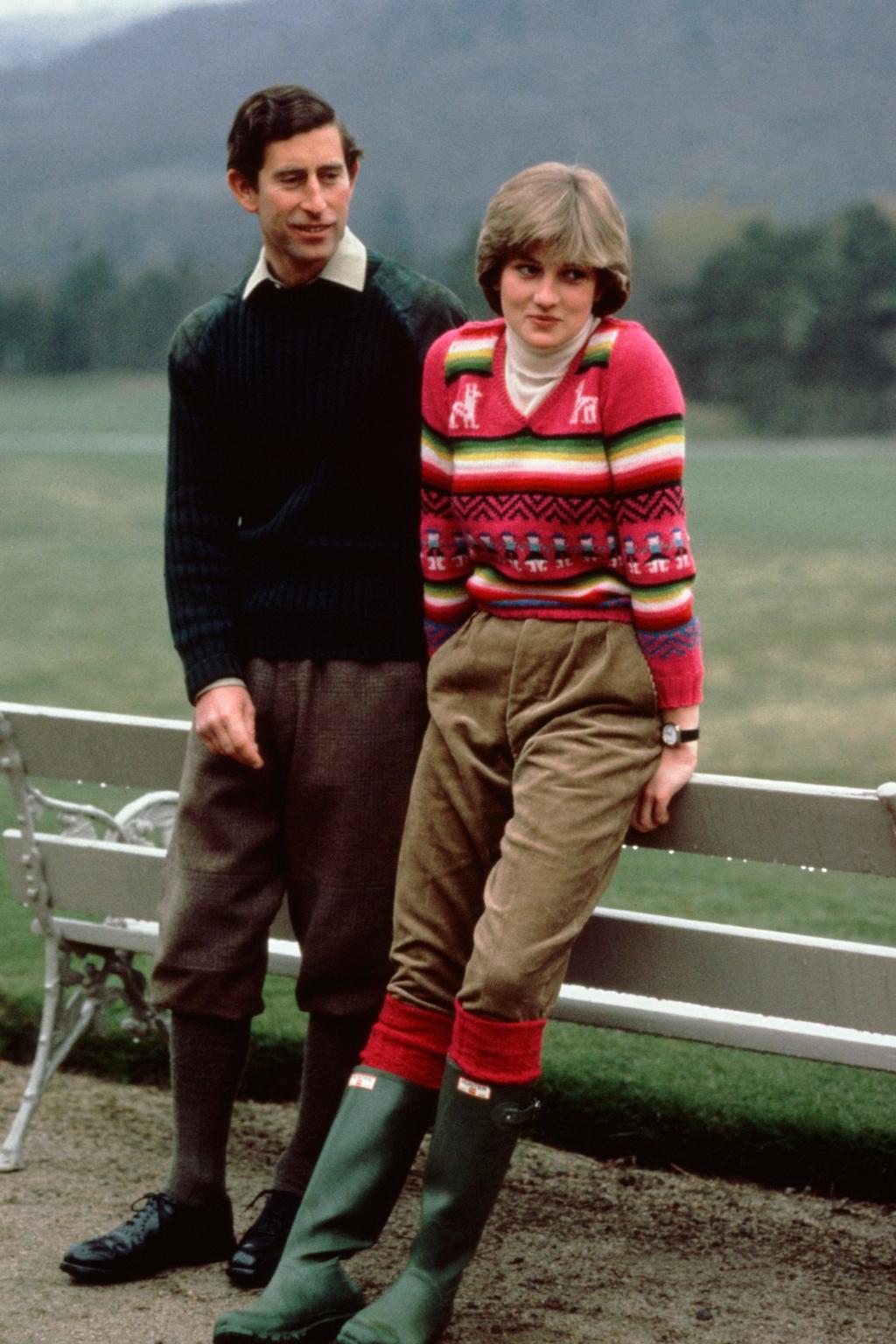
She had just three pieces in her wardrobe when she met a then-Prince Charles
While she would go on to commission countless looks, and held hundreds of pieces within her royal wardrobe, a young Lady Diana Spencer hadn’t actually held fashion in high esteem. In fact, her early style was once described as “uneducated” and consisted of a very limited number of clothing.
According to Vanity Fair, the late royal is said to have only had three pieces in her wardrobe in the years she was being courted by Prince Charles. With so few clothes to hand, she is said to have often borrowed clothing from her friends—her fellow “Sloane Rangers”—she shared an apartment with in London’s Sloane Square.

She would stage dress rehearsals specifically for necklines
When asked to look back on her time dressing Princess Diana, British fashion designer Caroline Charles recalled one particular ritual she and the late royal had undergone time and time again. “We used to rehearse necklines, making sure they weren’t too low, thinking about how she’d have to decorously get out of a car and face the waiting photographers.” The royal famously used a strategically-placed clutch purse when exiting cars to shield her cleavage from prying paparazzi lenses.

She was responsible for putting Jimmy Choo on the global fashion map, and had custom shoes made regularly
While a certain fashionable fictional columnist is often credited with bringing the name ‘Jimmy Choo’ to our collective consciousness, it was actually Princess Diana who put the eponymous shoe brand on our fashion radars.
She first stepped out in a pair of pale-blue satin Jimmy Choo sling-backs, designed to match a dazzling Catherine Walker minidress worn for a performance of Swan Lake at the Royal Albert Hall in June 1997. This moment put Jimmy Choo on the map: “It really started everything for us,” the brand’s creative director Sandra Choi previously told British Vogue. From that point, Choo regularly designed custom shoes to perfectly balance out the princess’ formal looks. “This was commonplace in the ’90s – if you worked with a couture designer, your shoes perfectly matched,” Choi explained.
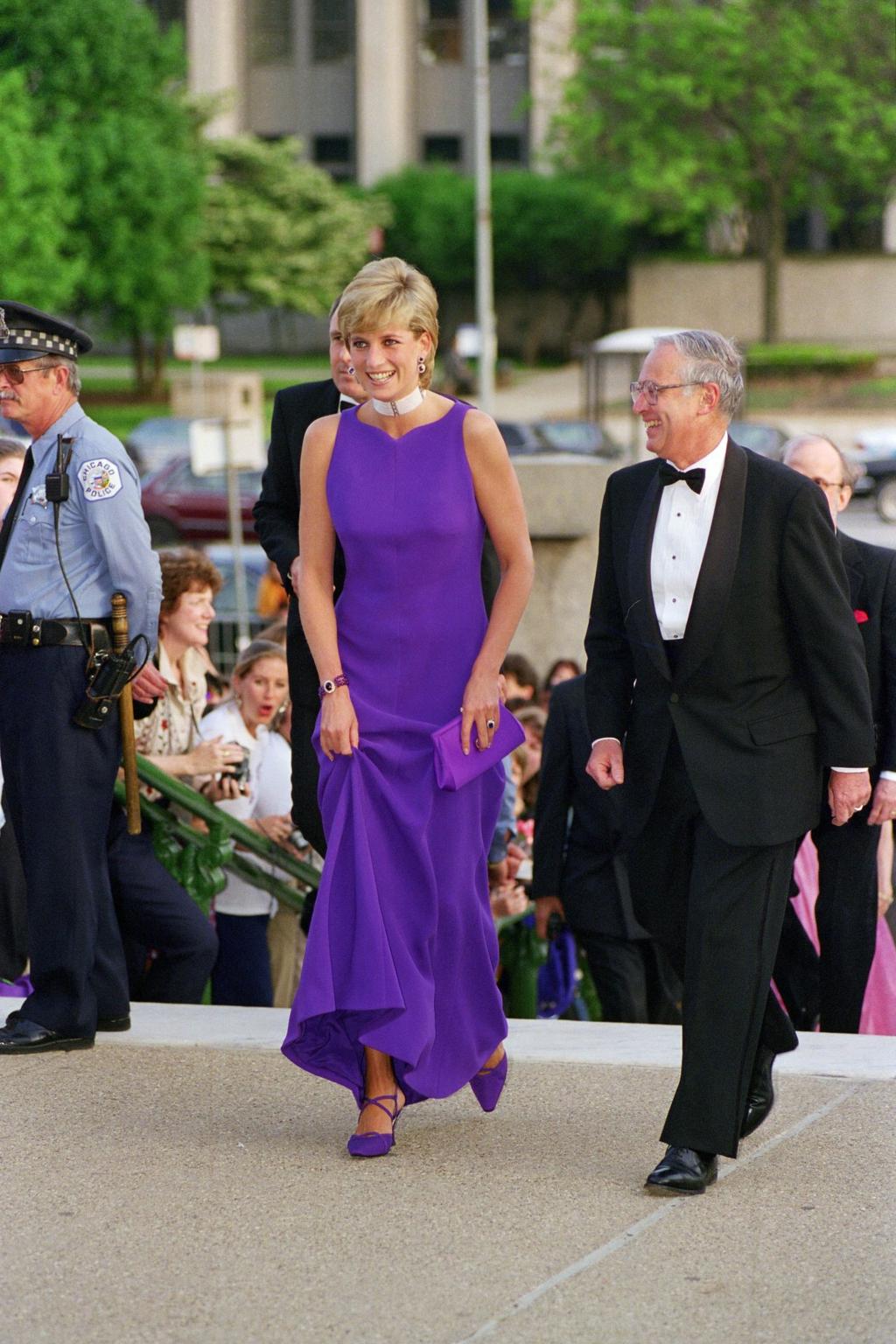
Choo himself—who departed the brand in 2001—has recalled his close relationship with the late royal. “I’d go to Kensington Palace quite regularly and design a pair of shoes to go with a new dress. Among others, she ordered the same basic pair of flat shoes,” the designer recounted.
As Diana’s style, and confidence in fashion, shifted, so too did her Jimmy Choo slingbacks: “When she first started wearing Jimmy Choo, it was a court shoe style in a lower heel height of 2.5 inches, but as time went by she [began] walking in higher heels that were classic styles with a twist,” Choi once shared.
The impact the footwear designer had on Diana’s style became undeniable when, on the October 1997 edition of British Vogue, released just three weeks after her untimely passing, Princess Diana appeared on the cover in a red pair of Jimmy Choo’s.

She maintained an unparalleled power over the global fashion industry that we have rarely seen since
Princess Diana’s iconic style wasn’t only influential on an inspirational level—the late royal had more pull within the global fashion industry than most realise. Even in her early years as a royal, the industry’s most powerful players kept a close eye on Diana. “A lot of international press and buyers came to London in the ’80s because of her, just as they’d come in the ’60s because of The Beatles,” British fashion designer, Caroline Charles, once said of her undeniable sartorial pull. “She brought some international glamour to British public life when we’d been loath to show it before.”
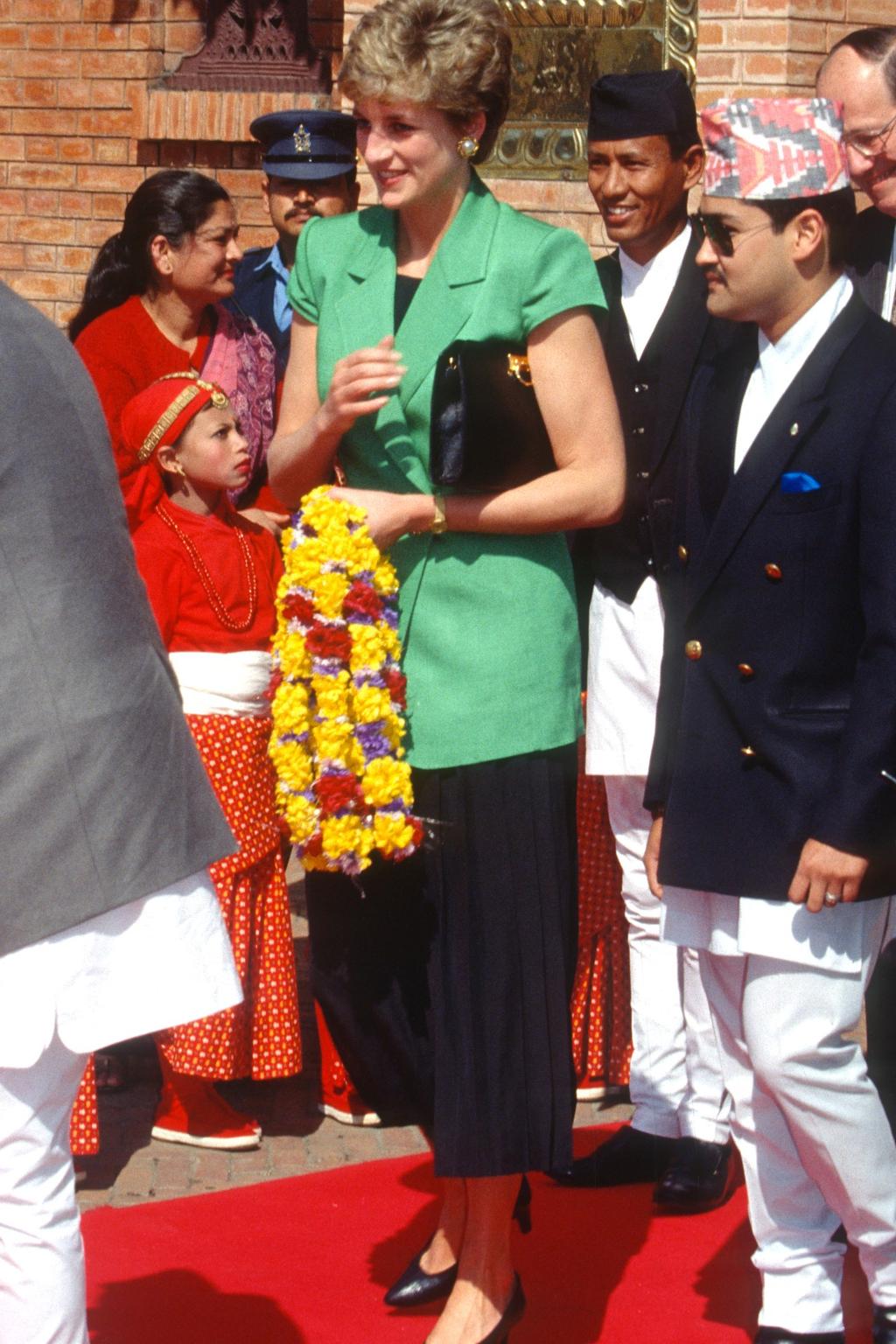
The clearest instances of her influence on fashion come in the form of styles that were named in her honour. Arguably, the more widely known piece is the Lady Dior bag. Originally named the Dior Chouchou, the style (pictured in the previous slide) was gifted to Diana by the former First Lady of France during the opening of a Cézanne exhibition in 1995, and once the royal began toting the style, it soon after bore her name.
Salvatore Ferragamo too created a custom clutch for the royal in 1990, naming it Diana, a bag (seen above) that is still available to this day. The house’s Vera bow clutch, which the royal famously wore with her “revenge dress”, has also become synonymous with the royal in the years since.

She made royal fashion history with a single piece of clothing
While the royal women of today have made the tailored trouser a staple within their on-duty wardrobes, it was once a royal fashion taboo—one which Diana naturally brushed to the side with a single look. “She was the first member of the royal family to be photographed wearing trousers to evening events. But she often teamed that with tuxedo jackets and bowties—that’s quite the bold, fun look that you don’t necessarily expect of a princess,” Eleri Lynn told Vanity Fair.

Gloves became one of her most political accessories
Before Kate, Princess of Wales, Princess Diana was incredibly adept at coded dressing, her looks often speaking volumes while she herself remained expectedly reserved. One sartorial mechanism that caught much attention was Diana’s incredibly calculated wear (or rejection) of gloves. “One of her most famous gestures [was] to remove her gloves very conspicuously to hold hands with patients—you know she’s using clothing and fashion in order to really hammer home that message [of empathy],” shared Eleri Lynn, adding that she didn’t really like to wear gloves altogether so she could maintain that contact.
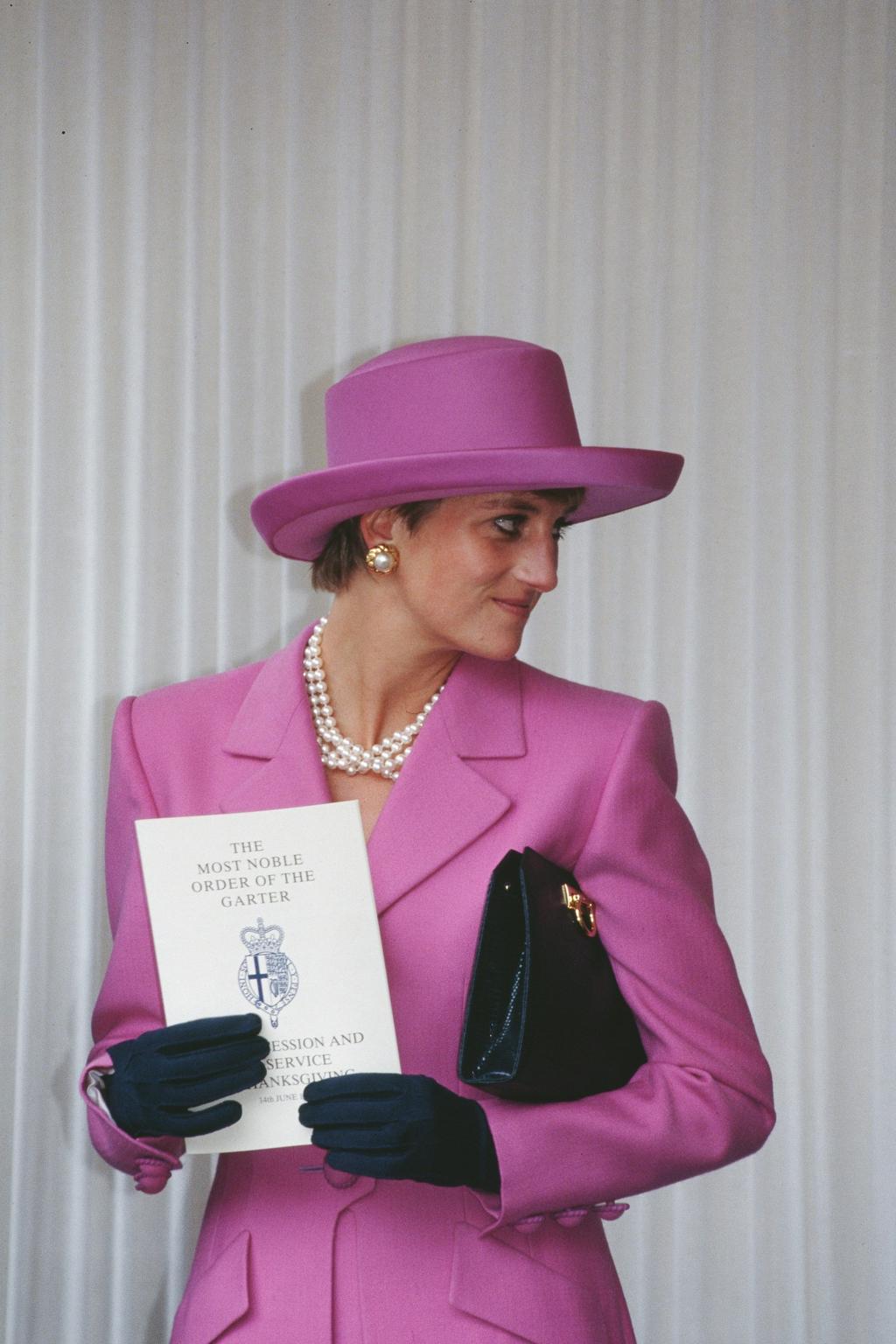
Deemed her “caring wardrobe” by the royal herself, Diana’s thoughtfulness, of course, went way beyond gloves, as explained by Lynn. “[She wore] cheerful, colourful clothes, because she wanted to convey approachability and warmth… She would sometimes wear chunky jewellery so that children could play with it, and she never wore hats to children’s hospitals after a while, because she said you couldn’t cuddle a child in a hat … if she was visiting hospitals for the blind, she would often wear velvet so that she would feel sort of warm and tactile.”

Her most iconic fashion moment almost wasn’t
While it’s hard to imagine a history of iconic fashion moments without Diana’s famous “revenge dress” moment included, it was once revealed that the immortalised image almost wasn’t.
According to fashion journalist and founder of @ladydirevengelooks, Eloise Moran, Diana never actually intended on wearing the daring design. According to Moran, it’s said that the princess had originally intended to wear Valentino, however after details of her look were leaked to the press, the royal—who is said to have “loved the element of surprise’—instead stepped out in the dress famously designed by Christina Stambolian.
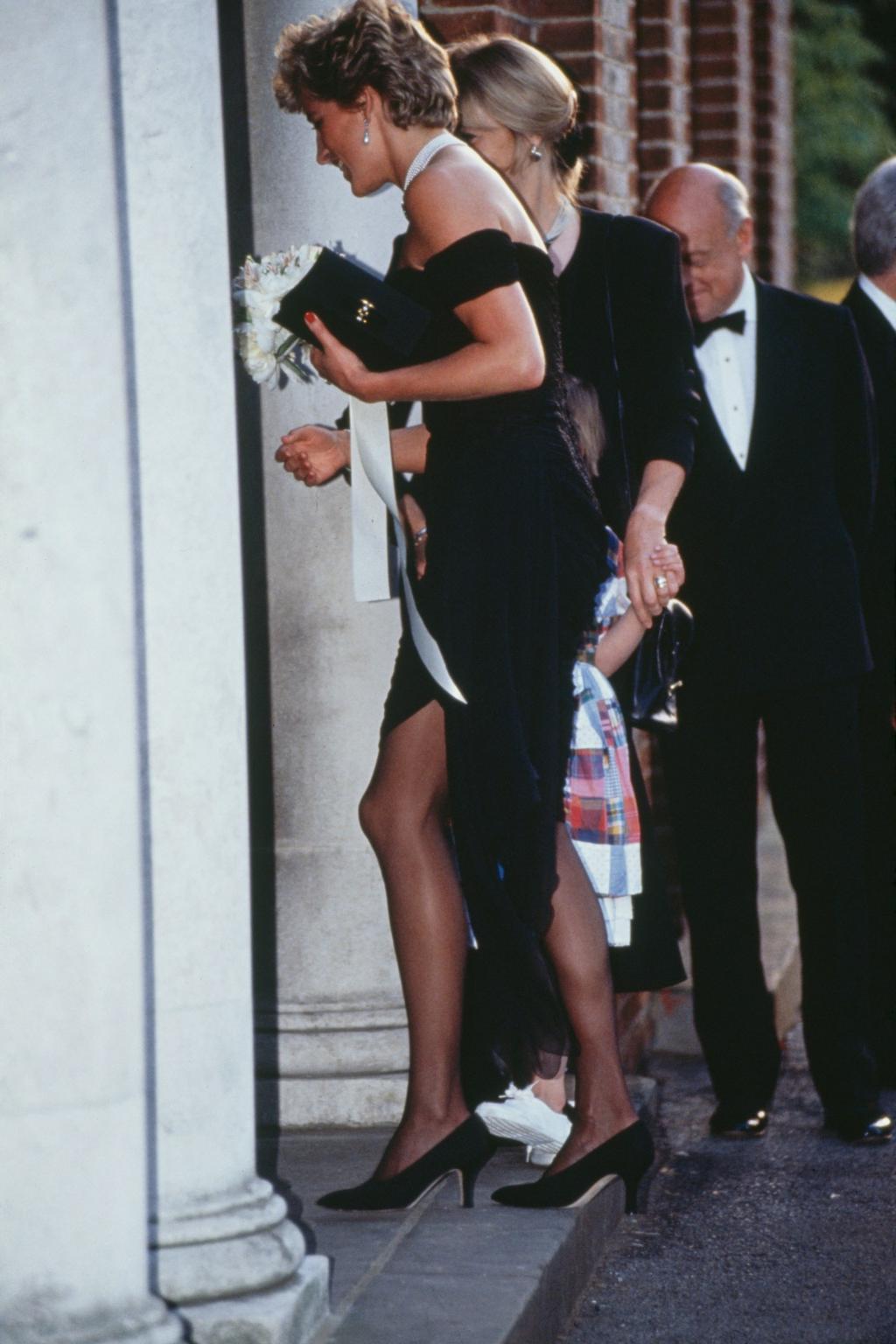
The dress is one Diana had actually owned for some time before that notable moment. According to Stambolian, the dress was actually made for her three years prior, but the royal had been too nervous to wear it with its “too daring” silhouette. But once her original look was no longer an option, Diana—who knew that a then-Prince Charles would be appearing in a scandalous documentary airing that same evening, which revealed details of their turbulent marriage—decided she wanted to look “like a million dollars” that night, as she told British Vogue’s former deputy editor, Anna Harvey. And that she did.
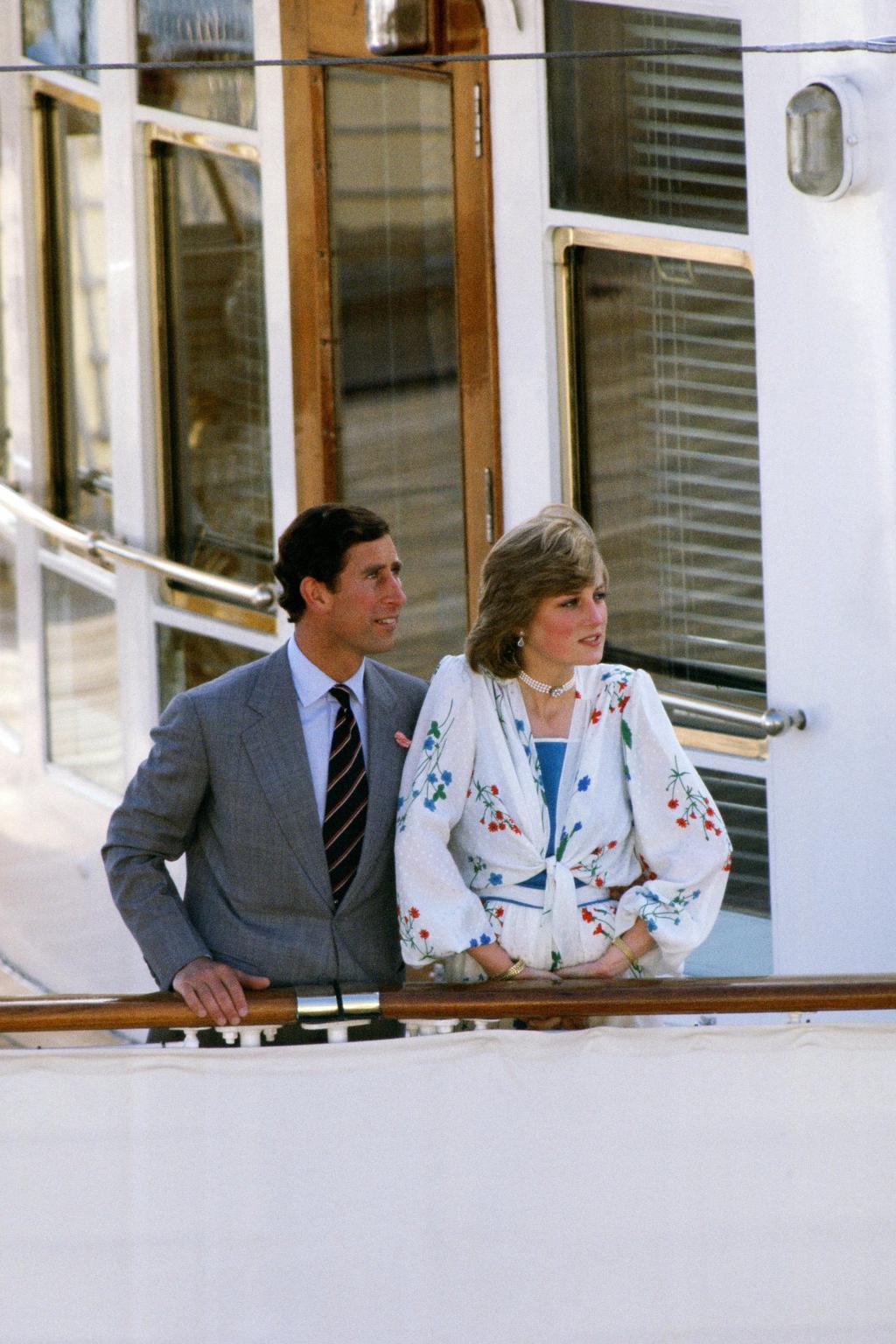
She worked closely with British Vogue’s former deputy editor, who remained her long-time ‘secret’ stylist
While her relationships with Walker and Jones and their design contemporaries were very much public knowledge, there were other sartorial dynamics that weren’t so well-known at the time. As mentioned above, the former deputy editor of British Vogue, Anna Harvey, was discreetly charged with “the daunting task of amassing a “suitable” wardrobe for Diana, by calling clothes into the magazine’s offices at Hanover Square for her to try on,” according to Vogue.
As recalled in a feature for British Vogue, Diana began her royal style era with “little more than ‘a few Laura Ashley blouses’ and ‘some bobbly jumpers’ to her name. Soon though, she was introduced to Harvey, who was charged with helping the then-19-year-old princess in waiting put together a bridal trousseau and honeymoon wardrobe “befitting a future Queen in the early ’80s”.
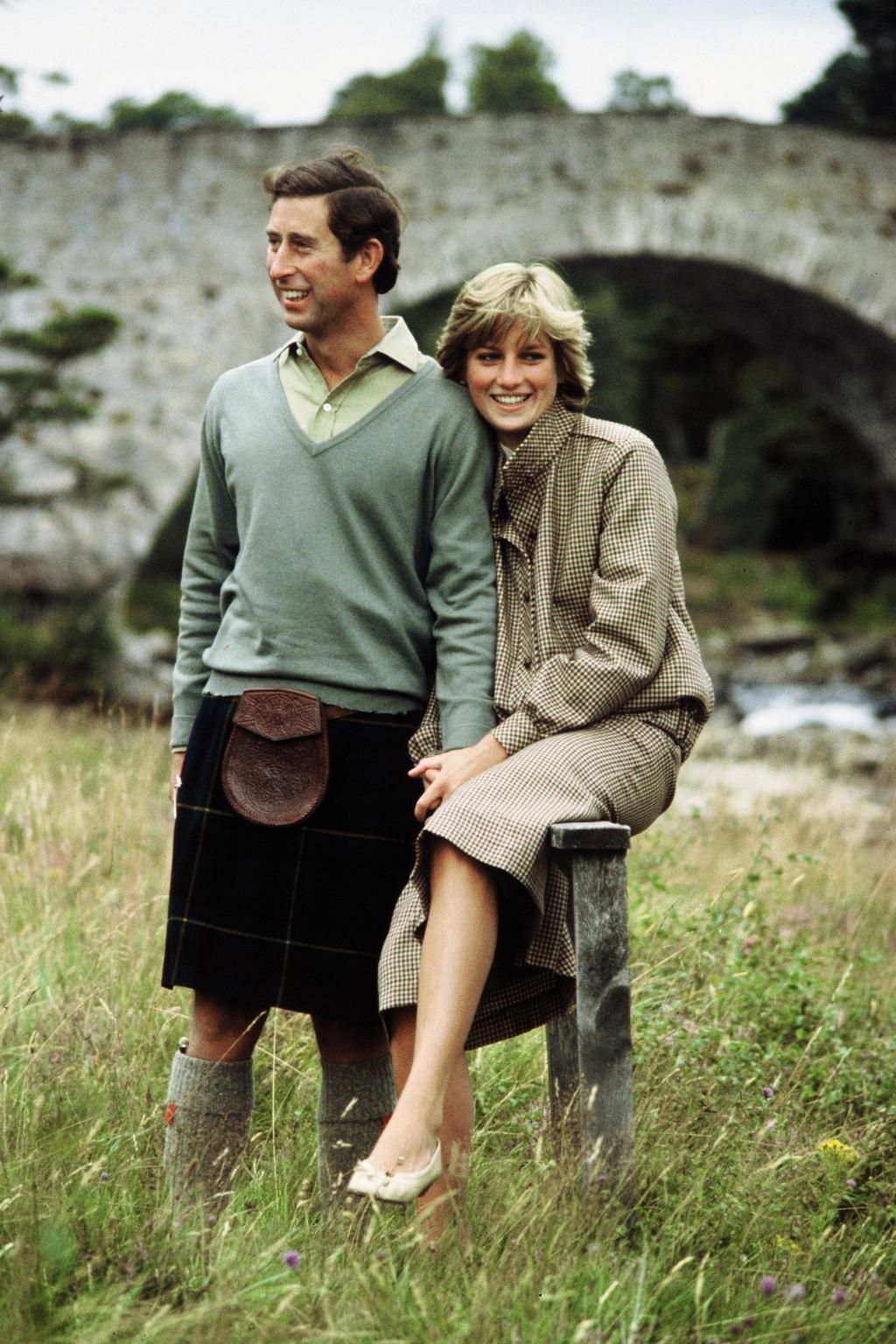
As both of Diana’s sisters had worked at the publication in varying capacities in years’ past, Diana was already very familiar with Vogue House. “The first time I met Lady Diana Spencer was in 1980, in the editor’s office,” Harvey recalled. “The engagement had been announced and she couldn’t go anywhere without being mobbed. Her sisters had worked at Vogue and we thought we might be able to help with her image. I’d called in far too many clothes because I had absolutely no idea of the kind of thing she liked. By the time she arrived, I was shaking like a leaf, but I took one look at her and thought, ‘this isn’t going to be too difficult after all.’”
“After that, I’d trundle over to Kensington Palace with a rail full of clothes for her to go through and we’d sit on the floor in her drawing room, looking at sketches and swatches of fabric, while the butler brought endless coffee.”
Years later, Diana was a true force within the fashion industry that wielded the same buying power as the publication itself, a power that is thanks, at least in part, to Harvey’s years-long dedication to carefully constructing Diana’s public image.
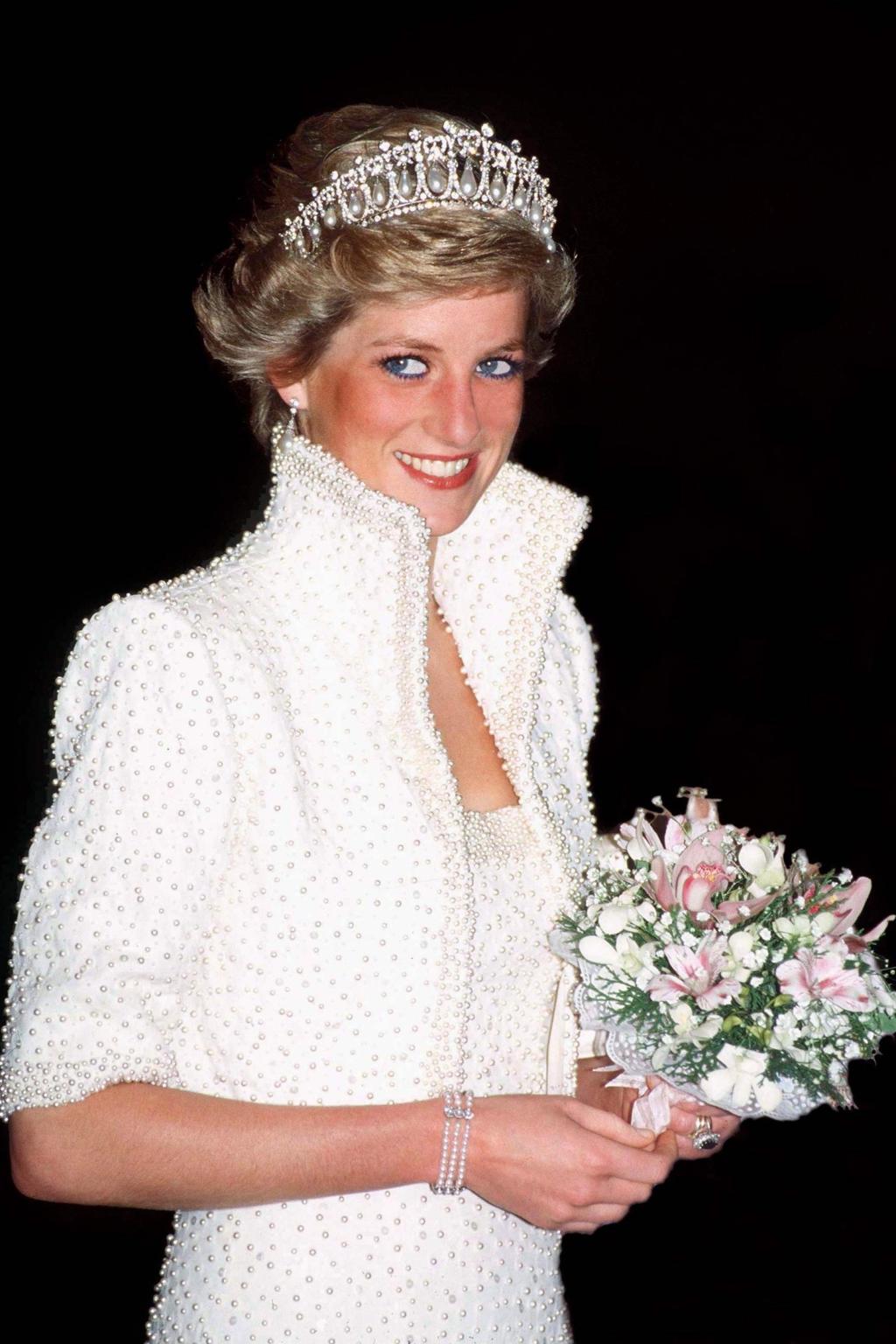
She had her own personal couturier for much of her royal career
While she once had a number of notable British designers on call to design countless custom looks, there was one in particular that Diana grew incredibly fond of. By the late 1980s, Catherine Walker was understood to be Diana’s sole personal couturier, said to have designed more than 1,000 of her suits, dresses, and gowns throughout their relationship.

She once had a collection of custom berets designed just for her
Assembled by the aforementioned Anna Harvey, there was a collective of designers—including Stephen Jones, Jasper Conran and Arabella Pollen—that were tasked with creating custom looks for the young Princess Diana that reflected the style of the time. According to US Vogue, the trio specifically designed a series of berets that Jones himself embroidered with her initials and the Prince of Wales’s feathers.
“She was coming of age when we were all New Romantics, dressing up to go to the Blitz Club in the early ’80s,” explained Jones of the interest in the accessory. “Diana never did [go], but the weird thing was I made the exact same beret for her as for [the club’s impresario] Steve Strange.”
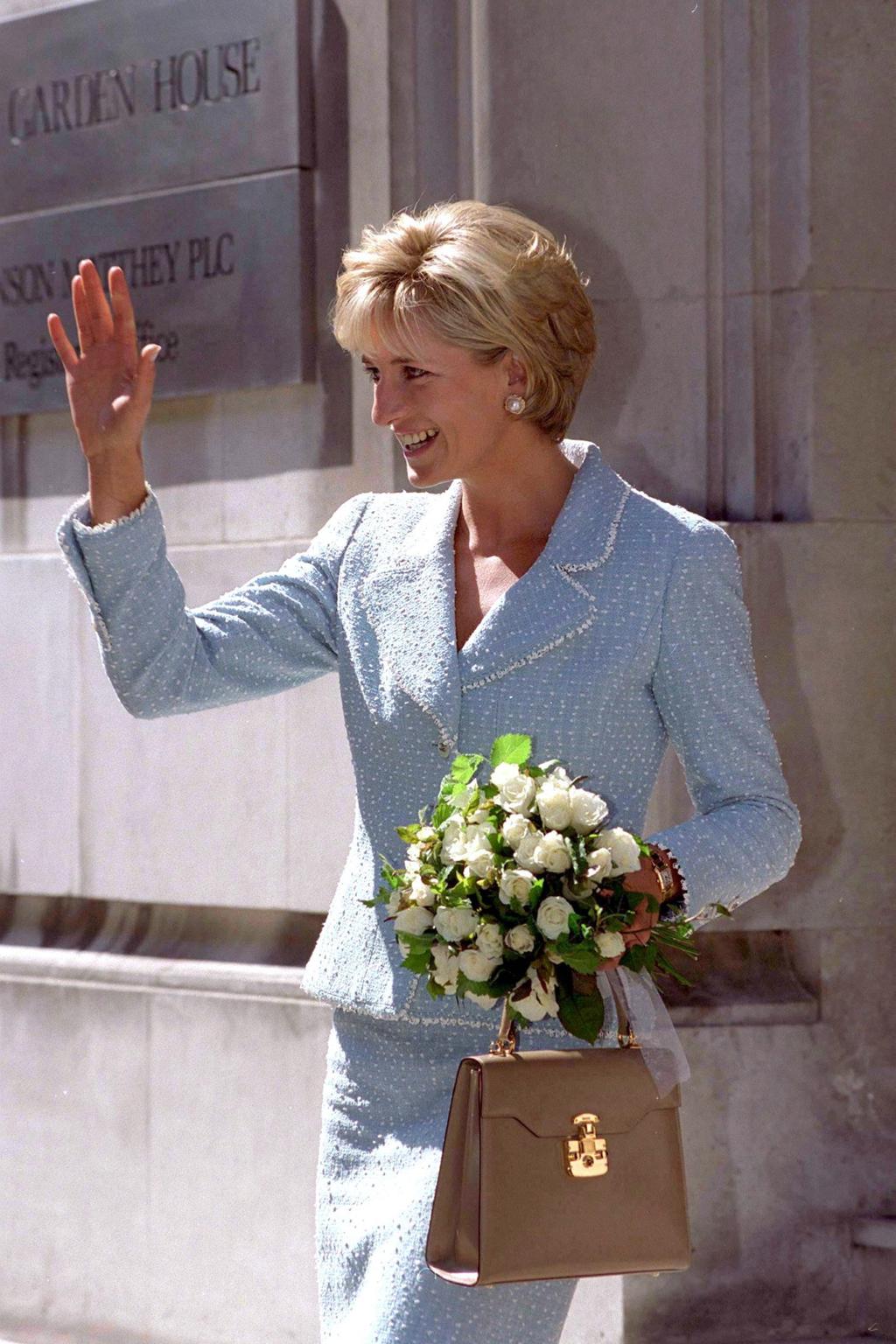
She made her love for international designers known once breaking from royal fashion protocol
While an official rule—or at least instituted by the powers that be at the time—it was protocol for royals to support British designers, encouraged to wear their designs to all official engagements. The directive didn’t deter a young Diana: “She wanted to wear British because she felt it was something positive she could do for the fashion industry. She was a very English girl and the romantic style suited her,” explained Harvey.

But once she’d been released from official royal duties following her divorce from a then-Prince Charles, Diana soon expanded her wardrobe to include the ruling international designers of the time. The likes of Chanel and Ralph Lauren often dressed Diana in her later years, in addition to the aforementioned Jimmy Choo and Salvatore Ferregamo, with the late royal holding a particular fondness for Versace, a designer which perfectly complemented the “slick, minimal, glamorous uniform” she maintained in that period.
